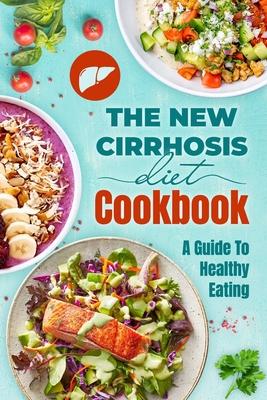
Book
The New Cirrhosis Diet Cookbook: A Guide To Healthy Eating: Cirrhosis Recipes
by James Arnold
(Write a Review)
Paperback
$8.99
Avoiding alcohol: Any amount of alcohol is considered unsafe for people with cirrhosis, as it's a potential cause of more liver damage-even liver failure. Drinking can also contribute to malnutrition and other health concerns.
Limiting fats: The body digests fats using bile, a yellow-green fluid made in the liver. When the liver is damaged, the production and supply of bile may be affected, leading to digestive symptoms. A liver that isn't working well has a hard time processing a high-fat meal. (Healthy fats can be included in moderation.)
Avoiding raw or undercooked meat and seafood: People with liver damage from cirrhosis have impaired immune function, so bacteria and viruses that these foods can harbor can lead to a potentially serious infection.
In addition to changing the content of your diet, you may need to change the quantity of the food you eat. Having liver disease can increase your risk for malnourishment, so you may need to eat more calories in a day to meet the increased energy demands on your body.
If you have liver disease, know that the recommendations for protein intake vary. The influence of protein on liver disease is somewhat controversial and still being studied.
You'll need to consult with your healthcare provider or a registered dietitian to determine the exact amount of protein recommended for you. The calories from protein will be an essential component of a varied and nutritious diet, and protein is key to preventing muscle atrophy (thinning).
Your healthcare provider may want you to make additional, specific changes to your diet to help manage or prevent other conditions people with liver cirrhosis may be more likely to get. Although liver cirrhosis is not reversible, modifying your diet can help prevent complications.
For example, limiting your intake of salty foods can promote sodium balance and prevent fluid retention and the associated condition ascites.
Further, moderating your intake of unhealthy fats can protect against steatorrhea, or excess fat in the stool, which can be a sign of malabsorption in your gut.
It's important to focus on getting enough calories and consuming a variety of foods. This helps prevent malnutrition, which is a common complication of cirrhosis.
Not only can malnutrition increase the incidence and severity of cirrhosis symptoms, but it can also impair immune function, decrease muscle mass, slow wound healing, and reduce your quality of life.
Lastly, it's important to get enough protein. Aim to consume plenty of high quality protein sources throughout the day, including foods like meat, fish, poultry, dairy products, and legumes. While a diet plan based on the details above can be a good starting point for those with liver problems, it's important to also work with a healthcare professional. They can help determine whether a liver cirrhosis diet is right for you. They may recommend combining certain dietary changes with other treatments, such as prescription medications, certain medical procedures, or lifestyle changes like exercise or quitting smoking
Avoiding alcohol: Any amount of alcohol is considered unsafe for people with cirrhosis, as it's a potential cause of more liver damage-even liver failure. Drinking can also contribute to malnutrition and other health concerns.
Limiting fats: The body digests fats using bile, a yellow-green fluid made in the liver. When the liver is damaged, the production and supply of bile may be affected, leading to digestive symptoms. A liver that isn't working well has a hard time processing a high-fat meal. (Healthy fats can be included in moderation.)
Avoiding raw or undercooked meat and seafood: People with liver damage from cirrhosis have impaired immune function, so bacteria and viruses that these foods can harbor can lead to a potentially serious infection.
In addition to changing the content of your diet, you may need to change the quantity of the food you eat. Having liver disease can increase your risk for malnourishment, so you may need to eat more calories in a day to meet the increased energy demands on your body.
If you have liver disease, know that the recommendations for protein intake vary. The influence of protein on liver disease is somewhat controversial and still being studied.
You'll need to consult with your healthcare provider or a registered dietitian to determine the exact amount of protein recommended for you. The calories from protein will be an essential component of a varied and nutritious diet, and protein is key to preventing muscle atrophy (thinning).
Your healthcare provider may want you to make additional, specific changes to your diet to help manage or prevent other conditions people with liver cirrhosis may be more likely to get. Although liver cirrhosis is not reversible, modifying your diet can help prevent complications.
For example, limiting your intake of salty foods can promote sodium balance and prevent fluid retention and the associated condition ascites.
Further, moderating your intake of unhealthy fats can protect against steatorrhea, or excess fat in the stool, which can be a sign of malabsorption in your gut.
It's important to focus on getting enough calories and consuming a variety of foods. This helps prevent malnutrition, which is a common complication of cirrhosis.
Not only can malnutrition increase the incidence and severity of cirrhosis symptoms, but it can also impair immune function, decrease muscle mass, slow wound healing, and reduce your quality of life.
Lastly, it's important to get enough protein. Aim to consume plenty of high quality protein sources throughout the day, including foods like meat, fish, poultry, dairy products, and legumes. While a diet plan based on the details above can be a good starting point for those with liver problems, it's important to also work with a healthcare professional. They can help determine whether a liver cirrhosis diet is right for you. They may recommend combining certain dietary changes with other treatments, such as prescription medications, certain medical procedures, or lifestyle changes like exercise or quitting smoking
Paperback
$8.99